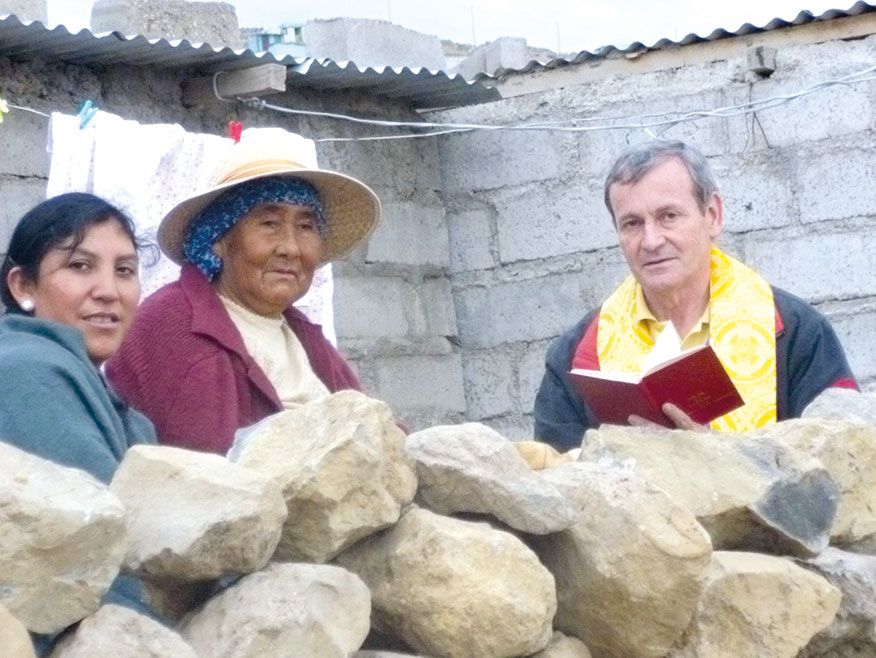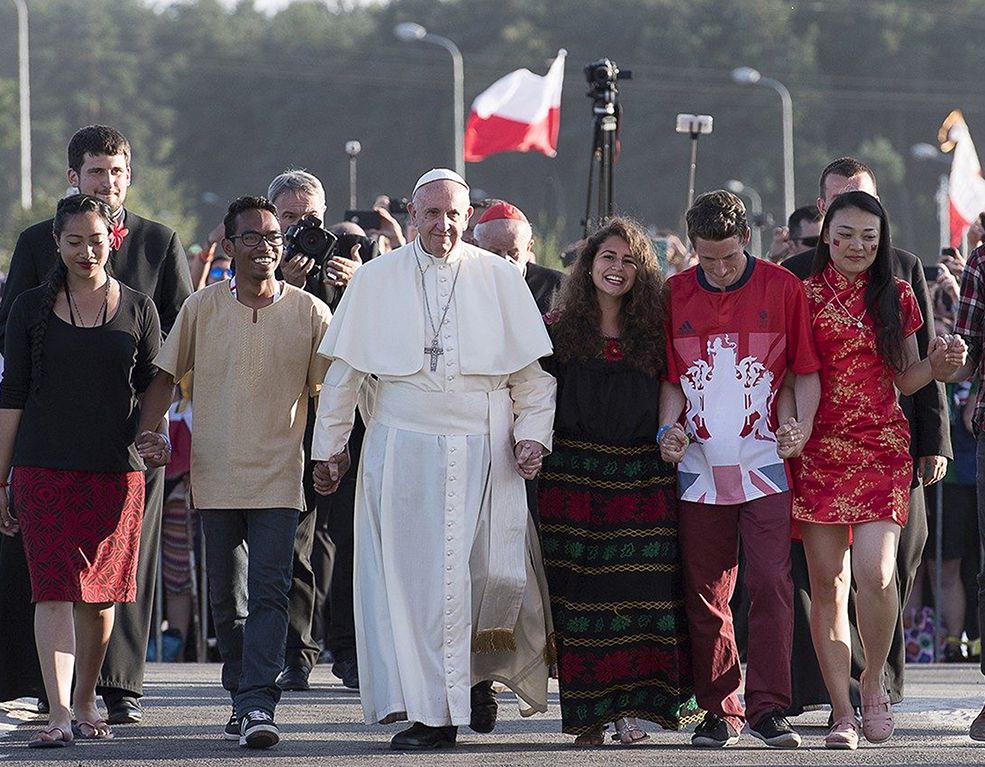I look out of the window and I see Jamil. He is a very lively small boy with extremely black eyes and hair, always well dressed. He arrives almost always first at the Comboni Sisters’ nursery school here, at Bethany. The window of my room looks on the area used as nursery for the children of the Palestinian village of Al Azaryia, at the foot of one of the many hills that rise along the way from Jerusalem to Jericho. We live right on the hilltop of this village that was once called Bethany by the Christians. Today, it is inhabited mostly by Muslims.
In the Gospel’s account, Bethany reminds us of the two sisters Martha and Mary and their brother Lazarus, Jesus’ close friend. Here, Jesus saw the love and the tears shed for Lazarus by his two sisters, friends and relatives. And Jesus also cried (John 11:33-44). And thus, He brought Lazarus back to life… a sweet prelude of what would happen to Jesus Himself on the day of His resurrection. Let us imagine Lazarus’ feelings after he came back to life four days after his death. And goodness knows how he lived his life after realizing that he had come back to it because of his great friend, Jesus!
Bethany is also Simon the leper’s village who, precisely in order to thank Jesus for his healing from leprosy, had invited Him with His disciples to have supper in his house. Here, a woman came into the room and poured unto Jesus’ head an alabaster vase full of expensive and fragrant nard oil. All the disciples were shocked by this “wastage” but Jesus reproached them saying that the poor would always be with them, but not He, Jesus. And that this anonymous woman’s gesture would remain forever in memory of her. She was doing nothing but anticipate the tradition of anointing with oil the bodies of the deceased for their burial. And Jesus was referring to His own death…(Matthew 26:6-13).
In short, this little village of Bethany was the place of a great friendship of many people with Jesus. Many people were accustomed to seeing Jesus passing through the narrow village streets, because every time Jesus came to Jerusalem, he would pass by His friends to greet them. Bethany is very close to Jerusalem and even closer to the Garden of Gethsemane on the Mount of Olives where Jesus lived the last moments of His agony and loneliness, before being arrested (Matthew 26:36-46). They are very important places for us, Christians, because they have written the history of Jerusalem, the Holy Land, Christianity and the entire world.
In the shadow of the wall
Today, Bethany, once the friendship village, is called Al Azaryia and belongs to the Palestinian Autonomous Territory i.e. the area under the administration of a Palestinian government that is not, however, recognized as a sovereign state within the State of Israel. It’s a long story that I will perhaps tell you another time, but what interests me more now is to tell you about the wall that divides the two territories.
Jamil and the other 52 children who come to the Comboni Sisters’ nursery school in our house live, play and look at their future in the shadow of the wall that divides two peoples (Jews and Palestinians), two languages (Arabic and Hebrew), two cultures and religions (Judaism and Islam); two different stories and yet, at the same time, intertwined between themselves.
Our compound, which is used by the nursery school, is surrounded by a 7-8 meter-high wall with a net on top to prevent possible intruders to enter. The wall continues for many kilometers. Here, just fifty meters from the Comboni Sisters’ residence, there is a checkpoint manned by at least four soldiers, night and day, to patrol the area. On the other side of the wall is Israel and the city of Jerusalem starts. This is the notorious 736-km-long wall that divides the Palestinian land from the State of Israel in many parts of its territory. Not only here.
We belong to the Palestinian territory and, daily, whoever wants to cross to the other side, must have a special permit and must show his/her passport and ID. Many other people and many Palestinian children, however, cannot do so. It is a great injustice and oppression, especially to young people and children undergoing formation in their growing years. And this has been going on for more than sixty years.
To build a future of dialogue
Jamil is an Arab and Muslim Palestinian. Like him, are many boys and girls: lively, attentive, eager to learn and play. Among the 53 children who attend the nursery school, 50 are Muslims and 3 are Christians. The teachers are Sr. Germaine, an Egyptian, and Karima (means “generous” in Arabic), a Muslim Palestinian from Al Azaryia village. The school is a crossroad of cultures, religions, histories and languages and those involved live together in communion in order to educate and build up together in dialogue a different future and a better world for these children between 3 and 5 years of age. On the inner side of the wall that surrounds the nursery school, some murals have been painted with different public figures, landscapes and plenty of color. It is a way of making these children live in “normality” that doesn’t exist but it symbolizes hope and color of a different future.
The children’s imagination and innocence, their shouts and songs fill the compound and the environment with a cheerful atmosphere. It is an invitation to life, to the belief that right here, where Jesus was living His humanity as Man-God, in the close friendship with Lazarus, Martha and Mary, we can still dream of a world where justice, peace, solidarity and wisdom of the common people will prevail over the thirst for power and oppression of the politicians and the powerful. They are like Herod who wanted to kill the Baby Jesus. How many slaughters of innocent women and children have we witnessed powerlessly and passively throughout our history?
Not far from here, at Jericho, following the road (now cut by the wall of division) that goes down from Jerusalem to Jericho (remember the parable of the Good Samaritan) and passes through Bethany, the Bible reminds us, in the Old Testament (Jos 6:1-26), of a “certain Joshua.” Leading the people of Israel, he surrounded the walls of the “enemies’ city.” At the singing and blowing of trumpets, the city walls crumbled. One day, these and the many other thousands of Palestinian and Jewish children, who now live in the shadow of this wall of hatred and division, will also dwell in concord and peace – without the walls and barbed wires. They will also see the walls crumble… A dream? Yes, as of now. But, it could be a reality someday.













